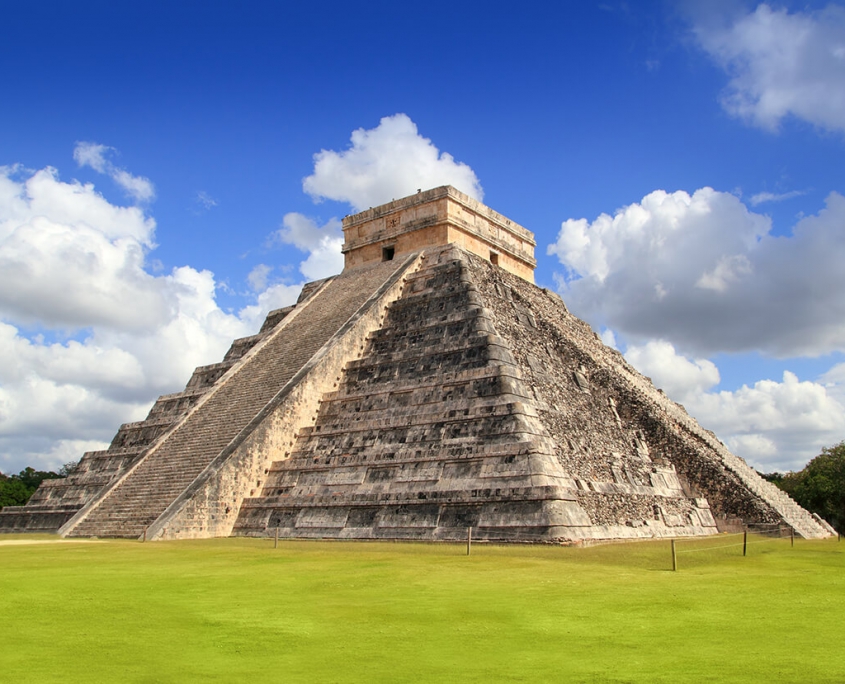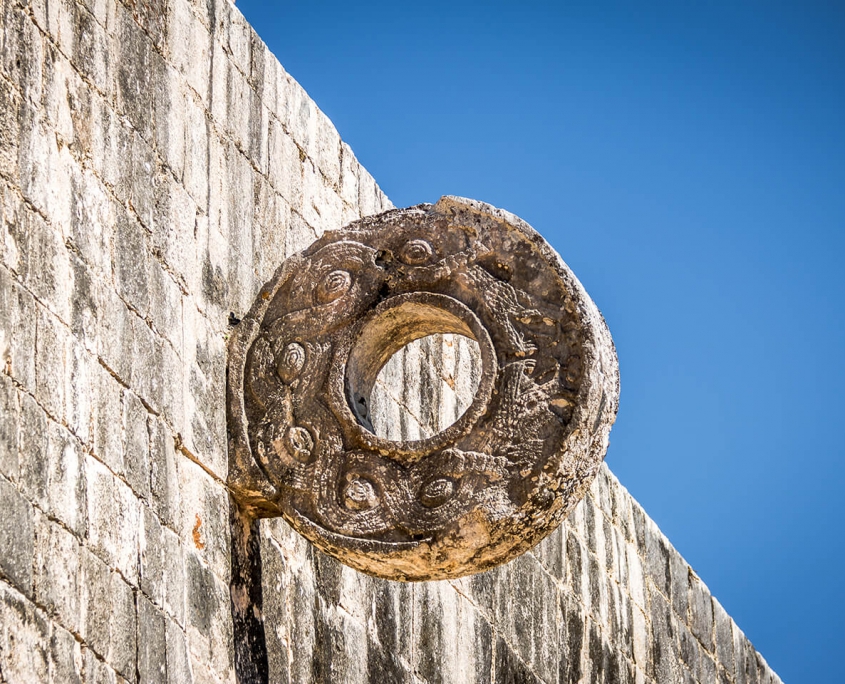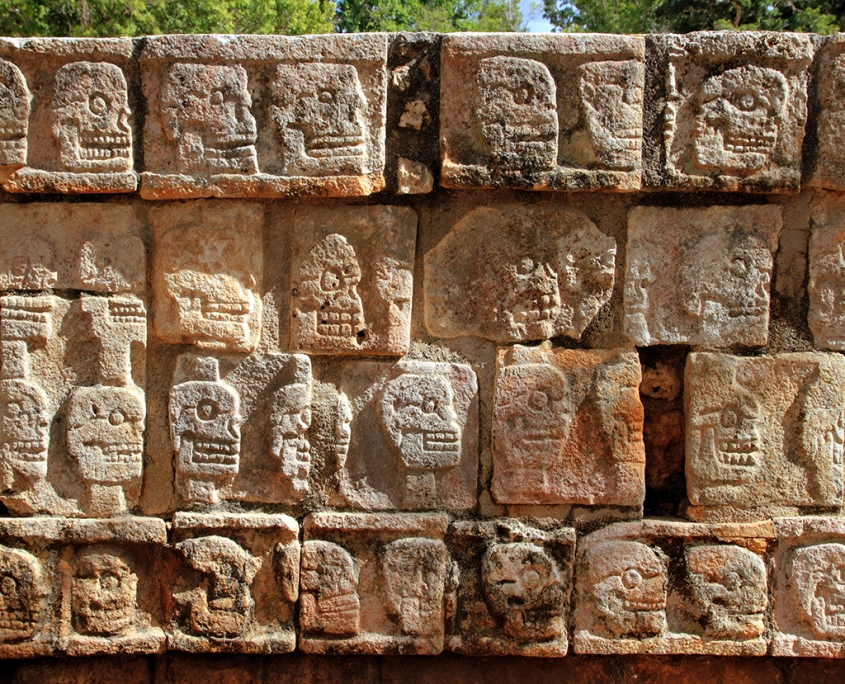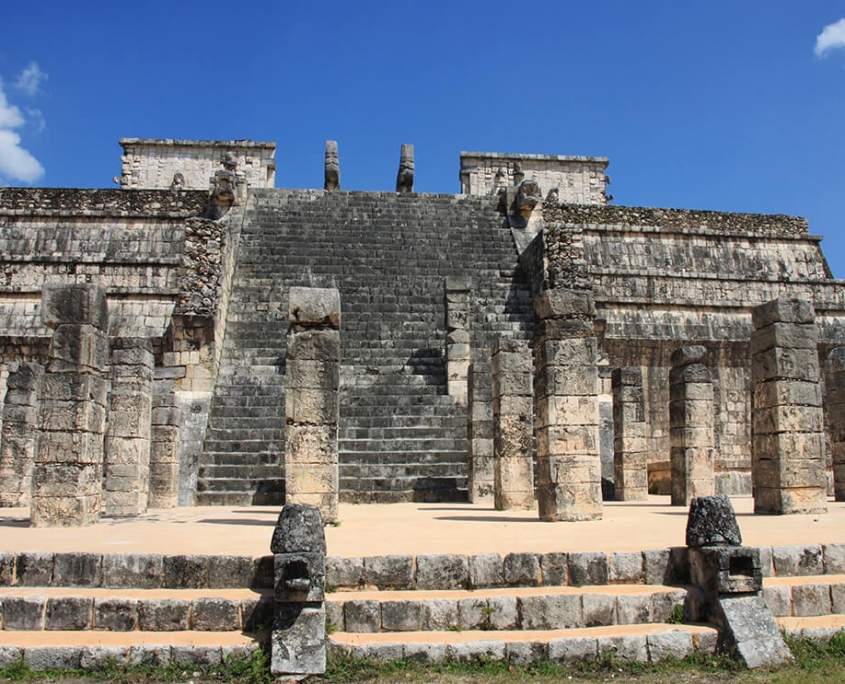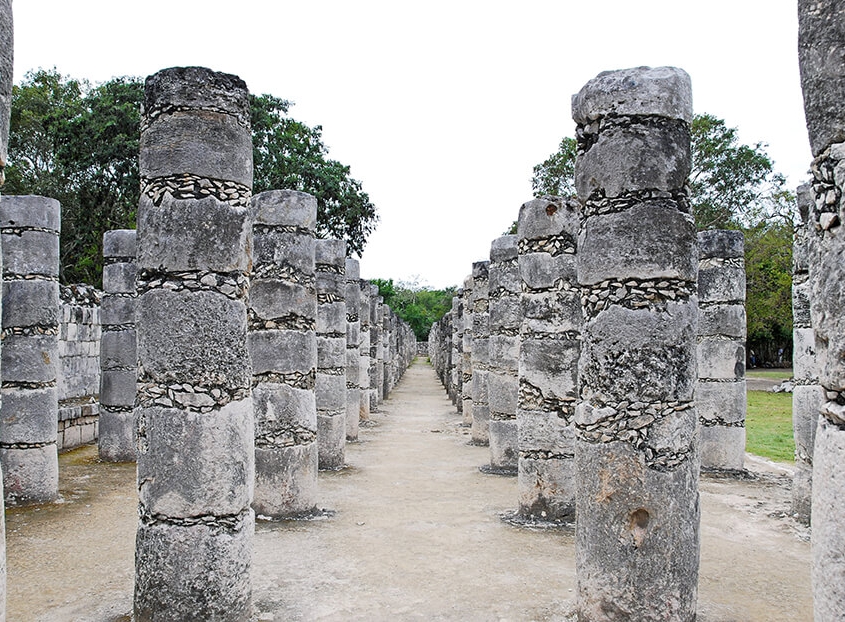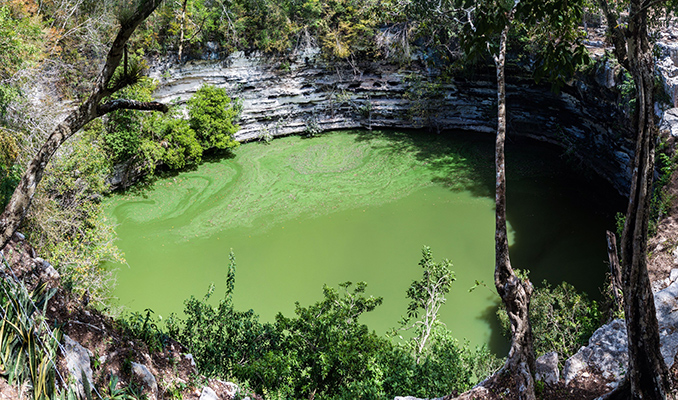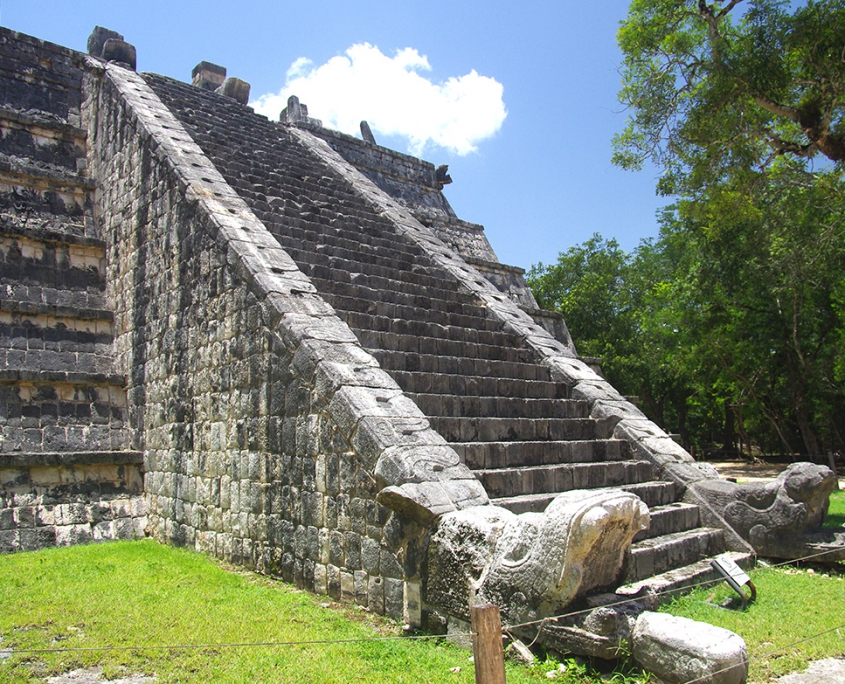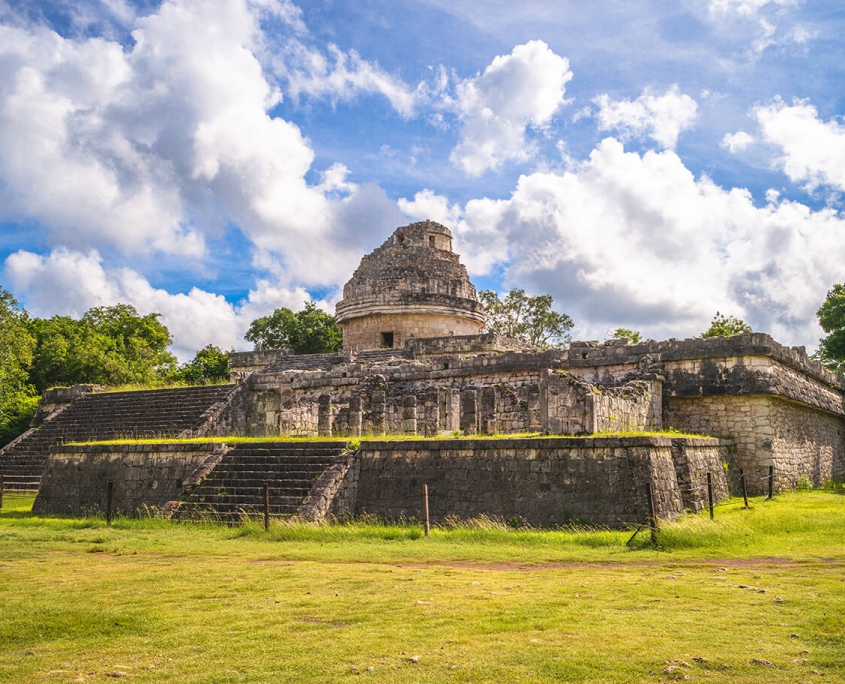Did you know that the ancient city of Chichen Itza stretches for 20 square kilometers and that only three percent of this vast archaeological site is open to the public? The famous Pyramid of Kukulcan, the Observatory and the surrounding temples have earned Chichen a place on the UNESCO World Heritage list, but just imagine how many more marvels await discovery under the forest canopy. Even if you have visited Chichen Itza before there is always something new to see as archaeologists continue to restore buildings on the site and spring is a great time for a return trip to channel mystic energy. Thomas More Travel has the perfect tour for you.
Principal highlights
Pyramid of Kukulcan
The sacred heart of Chichen Itza is dominated by the Pyramid of Kukulcan, also known as El Castillo. This 25-meter-high pyramid is a solar clock, aligned to catch the rays of the setting sun on the spring and fall equinoxes in March and September. Triangles of light and shadow form along the side of the north staircase and the figure of a snake appears, merging with the head of a stone snake at the foot of the building, creating the illusion of a gigantic serpent slithering down from the heavens and across the ground towards the Sacred Cenote. The apparition of this mysterious figure is testimony to the skill of ancient astronomers and architects.
The snake symbolizes Kukulcan (also known as Quetzalcoatl in central Mexico), the feathered serpent god, returning to earth to give hope to his followers and heralding the spring planting and fall harvest seasons for the Maya.
The Ball Court
The Ball Court in the Great Plaza is the largest in the Maya World. It was here that the Maya played a fast-moving ball game in which teams of warriors had to get a rubber ball through a stone ring high up on the wall of the court with their elbows, wrists and hips without kicking it or using their hands. Priests and nobles would watch the game from the viewing platform in the South Temple.
The ball game had religious and mythological overtones and was linked to the eternal battle between light and darkness, good and evil, death and rebirth. The carved panels on the court walls show warriors, ball players in full regalia and the ritual decapitation of one of the team captains.
The acoustics in the ball court are incredible – you can literally stand at one end and clap and be heard by someone standing at the other end, 146 meters away.
The Temple of the Jaguars
The jaguar or balam was a sacred animal for the Maya; it was the bearer of the sun on its nightly journey through the Underworld and was associated with war on account of its ferocity and strength. It comes as no surprise that the jaguar was venerated in the warlike city of the Itzae and that it even has a temple to honor it.
Jaguars, Mayan and “Toltec” warriors, feathered serpents and even a battle scene appear in the friezes in the upper and lower temples. The lower temple also has a jaguar throne.
Tzompantli
This low platform in the Great Plaza was a skull rack upon which the heads of sacrificial victims or captives were displayed. The wall carvings have a military theme and show skulls, warriors, serpents and eagles devouring hearts.
Temple of the Warriors
Built on top of an earlier temple called Chac Mool, the massive Temple of the Warriors is famous for its columns covered with carvings of warriors and priests; panels featuring Kukulcán emerging from the jaws of a snake, jaguars and eagles devouring hearts, a mural showing an attack on a coastal village by seagoing warriors in canoes, Atlantes figures, standard bearers, and a Chac Mool statue on the upper level surrounded by feathered serpent pillars that once supported the temple roof. The architecture is a blend of Mayan and central Mexican elements.
The Court of a Thousand Columns
The colonnades in front of and to the south of the Temple of the Warriors were originally covered with a wooden roof and may have been halls that were used during ceremonies or for gatherings during which nobles discussed city policy. The colonnade extending from the front of the Temple of the Warriors to the northwest consists of 221 pillars, each one carved with a unique portrait of a warrior, priest, noble and captives. The courtyard formed by these walkways housed ball courts, temples, steam baths and the Mercado or Market, also thought to have been the site of the Popol Nah or council chamber.
The Sacred Well
A short walk from the Great Plaza along a sacbe is the Sacred Cenote, a deep sinkhole that was once the site of sacrificial ceremonies to appease Chaac, the rain god. The Maya believed that cenotes and caves were entrances to the Underworld, the home of the gods and therefore holy places.
The Ossuary
Also known as the Tomb of the High Priest in reference to the burials found in a cave under the pyramid, the Ossuary was built some time during the 9th century. The wall carvings feature serpents, birds with the face of Itzamna, the chief god in the Mayan pantheon, cacao, fruit, Chaac masks and images of Kukulcan.
En route to the Observatory you see the House of the Deer and the Chichanchob or Colored House, two of the site’s earlier buildings. Archaeologists are currently studying hieroglyphic inscriptions found at the Colored House.
Ancient Observatory
El Caracol, also known as the Observatory, is a round tower on a square platform that was used by ancient Mayan priests and astronomers to study the heavens. It has a viewing platform and wells to mirror starlight, and was aligned to catch sunsets and moonsets on both equinoxes and to mark the course of Venus. Round towers are rare in the Maya World and are a central Mexican innovation. Archaeologists have discovered that the Observatory had at least six building phases.
Maya Chichen
The group of buildings located to the south of the Observatory was built during the period A.D. 600-900 in the Puuc architectural style typical of southwestern Yucatan and characterized by elaborate friezes featuring curl snouted masks of Chaac, the rain god. The largest building is Las Monjas, which had seven building phases and was christened “The Nunnery” by Diego de Landa because it resembled the convents of Spain. The East Annex and La Iglesia (the Church) are smaller buildings with magnificent upper friezes.
Paths lead on from this area into Chichen Viejo, where there are more clusters of earlier temples in the forest. Archaeologists are still at work here and the area is set to open in 2022.
Explore Chichen Itza with Thomas More Travel
Thomas More Travel offers a variety of trips to Chichen Itza to suit your vacation needs. You can explore the archaeological site at your leisure, calling in at other historic sites in eastern Yucatan, take the express tour if you are short of time and even explore the ancient city in the afternoon, staying on for the evening video mapping show.
To give you an example, the exclusive Classic Chichen Itza in-house tour includes a guided tour of the archaeological site, lunch, time for swimming in Cenote Selva Maya and a drive through the center of the historic town of Valladolid (tour buses cannot stop at the moment due to government restrictions.)
Call in at the tour desk to book your Chichen Itza trip.

